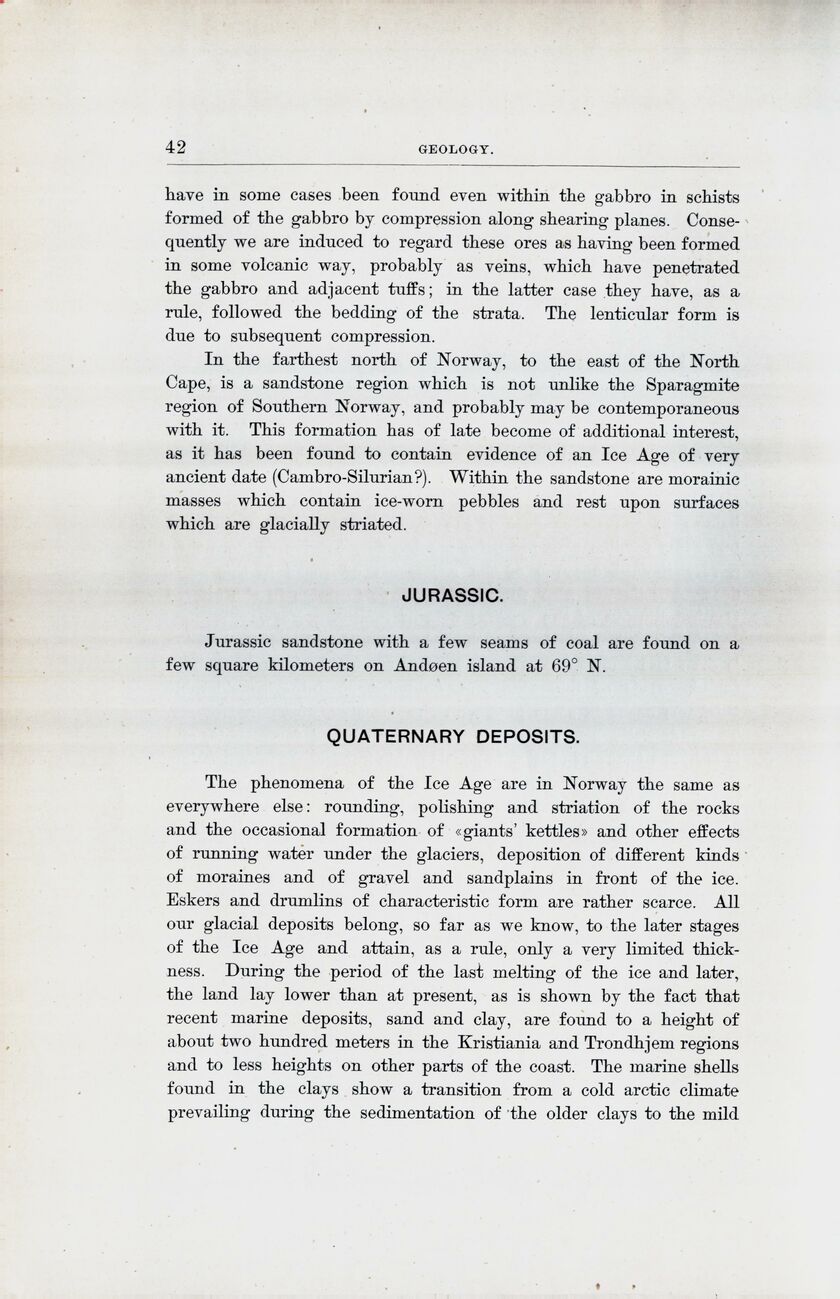
Full resolution (JPEG) - On this page / på denna sida - Geology, by H. H. Reusch

<< prev. page << föreg. sida << >> nästa sida >> next page >>
Below is the raw OCR text
from the above scanned image.
Do you see an error? Proofread the page now!
Här nedan syns maskintolkade texten från faksimilbilden ovan.
Ser du något fel? Korrekturläs sidan nu!
This page has been proofread at least once.
(diff)
(history)
Denna sida har korrekturlästs minst en gång.
(skillnad)
(historik)
have in some eases been found even within the gabbro in schists
formed of the gabbro by compression along shearing planes.
Consequently we are induced to regard these ores as having been formed
in some volcanic way, probably as veins, which have penetrated
the gabbro and adjacent tuffs; in the latter case they have, as a
rule, followed the bedding of the strata. The lenticular form is
due to subsequent compression.
In the farthest north of Norway, to the east of the North
Cape, is a sandstone region which is not unlike the Sparagmite
region of Southern Norway, and probably may be contemporaneous
with it. This formation has of late become of additional interest,
as it has been found to contain evidence of an Ice Age of very
ancient date (Cambro-Silurian?). Within the sandstone are morainic
masses which contain ice-worn pebbles and rest upon surfaces
which are glacially striated.
<< prev. page << föreg. sida << >> nästa sida >> next page >>